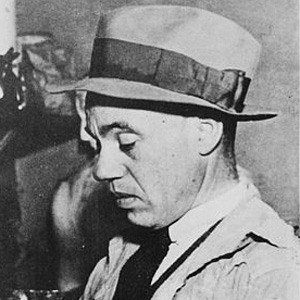
“It is the pure American Negro I am concerned with, aiming to show the natural beauty and dignity in that characteristic lip and that characteristic hair, bearing and manner; and I wish to show that beauty not so much to the white man as to the Negro himself.” — Sargent Johnson quoted in San Francisco Chronicle, Sargent Johnson: Retrospective (Oakland: The Oakland Museum Art Division Special Gallery, 1971).
Born in Boston on October 7, 1887, Sargent Johnson was the third of six children of Anderson and Lizzie Jackson Johnson. Anderson Johnson was of Swedish ancestry, and his wife was Cherokee and African American. All of the children were fair enough in complexion to be considered white, and several of Johnson’s sisters preferred to live in white society. Sargent, however, was insistent upon identifying with his African-American heritage throughout his life.
The Johnson children were orphaned by the deaths of their father in 1897 and their mother in 1902. The children spent their early years in Washington, D.C., with an uncle, Sherman William Jackson, a high school principal whose wife was May Howard Jackson, a noted sculptress who specialized in portrait busts of African Americans. It was probably while young Sargent was living with his aunt that he developed his earliest interest in sculpture.
Johnson worked at various jobs during his first years in San Francisco but also attended two art schools, the A. W. Best School of Art and the California School of Fine Arts. Johnson was enrolled at the latter school from 1919 to 1923 and from 1940 to 1942. He studied first under the well-known sculptor Ralph Stackpole for two years, and for a year with Beniamino Bufano. Johnson’s student work at the California School of Fine Arts was awarded first prizes in 1921 and 1922.
In 1925 Johnson came to the attention of the Harmon Foundation. During the following year he began exhibiting in the foundation’s exhibitions and was represented regularly from 1926 to 1935. Johnson won numerous awards in the Harmon Foundation shows, including the Robert C. Ogden prize in 1933 for the most outstanding work in the exhibition. In 1930 and 1931, the Harmon exhibition was shown at the Oakland Municipal Art Gallery and Johnson was represented in both shows, and was the only California artist to be included. Johnson’s works of the 1920s consisted primarily of small, smoothly finished ceramic heads that were primarily of children and were greatly influenced by the style of Bufano.
The 1930s were the most productive decade in Johnson’s career. His figure style retained the basic simplicity of his earlier works. He became more interested, however, in stylization of forms and experimented with a variety of mediums—terra cotta, wood, beaten copper, marble, terrazzo, porcelain, etchings, and gouache drawings. Johnson’s earliest interest in African art became manifest around 1930 when he executed several copper masks based on African prototypes.

The W.P.A. Federal Art Project provided a number of opportunities for Johnson during the late 1930s in the Bay Area. Johnson’s first large W.P.A. project was an organ screen carved of redwood in low relief for the California School of the Blind in Berkeley. The eighteen-by-twenty-four-foot panel was completed in 1937 and installed in the school’s chapel. In 1939 he undertook another W.P.A. project, decorating the interior of the San Francisco Maritime Museum in Aquatic Park.
One of Johnson’s favorite activities during the late 1950s and 1960s was collecting diorite rocks from the seashore near Big Sur, California. Diorite became one of Johnson’s preferred materials in addition to cast stone and terra cotta. Johnson’s last sculptures, completed in 1965 and 1966, were made of diorite and displayed a completely abstract style and simplicity.
Johnson moved a number of times in the final fifteen years of his life. Following an illness in 1965, Johnson finally settled in a small hotel room in downtown San Francisco. In October 1967 Johnson died there of a heart attack. During his long and distinguished career he never ceased to grow as an artist and to keep abreast of contemporary techniques. His works were influenced by Cubism as well as the art of West Africa, Latin America, and Mexico. Gifted with the remarkable ability to combine those influences with his own style, Johnson created sculpture that reflects his own vitality and originality.

